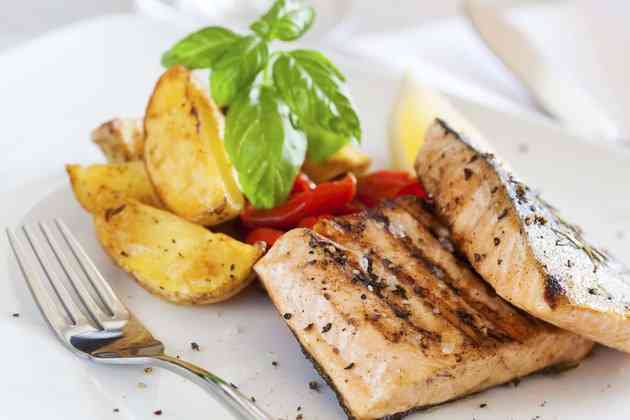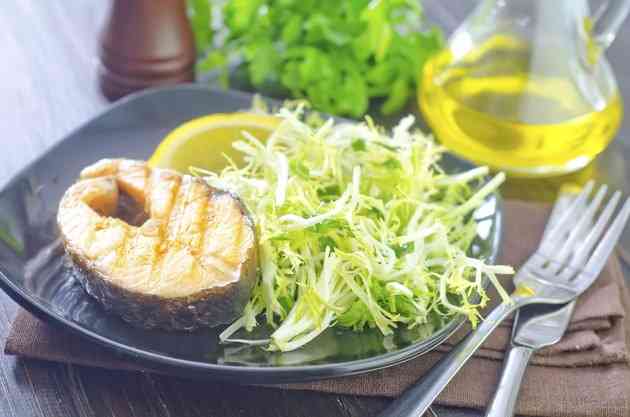The Best Sources of EPA & DHA

EPA, which is eicosapentaenoic acid, and DHA, which is docosahexaenoic acid, are two types of omega-3 fatty acids that are most commonly found in seafood. These polyunsaturated fats are known to have preventative health benefits and have been studied for their role in treating certain chronic conditions. In addition to dietary sources, certain supplements such as fish oil, are also rich in EPA and DHA.
 Salmon is one of the best sources of DHA and EPA. (Image: Jurajkovac/iStock/Getty Images)
Salmon is one of the best sources of DHA and EPA. (Image: Jurajkovac/iStock/Getty Images)Sources of EPA and DHA
 Oysters (Image: IvanMikhaylov/iStock/Getty Images)
Oysters (Image: IvanMikhaylov/iStock/Getty Images)There are three types of omega-3 fatty acids, which include EPA, DHA and ALA, which is alpha-linoleic acid. Although EPA and DHA are found to have high amounts from animal sources, ALA is found in rich concentrations in plant sources, including certain vegetable oils and flaxseeds, although fatty fish and shellfish are the best sources of EPA and DHA, according to the National Center for Complementary and Alternative Medicine. Examples of these fatty fish and shellfish include salmon, tuna, trout, crab, oysters and mussels.
Foods With the Highest Concentrations
 Lobster (Image: Jupiterimages/liquidlibrary/Getty Images)
Lobster (Image: Jupiterimages/liquidlibrary/Getty Images)The Department of Ecology of the State of Washington has ranked various seafood based on its EPA and DHA concentrations. The highest-ranking seafood is mackerel, excluding King mackerel, that has a concentration of 1,790 milligrams of combined EPA and DHA per 100 grams, followed by salmon at 1,590; bluefin tuna has between 1173 and 1504 milligrams; sardines contain 980 milligrams; albacore tuna has 862 milligrams; bass has 640 milligrams; tuna has 630 milligrams; trout and swordfish have 580 milligrams; and walleye has 530 milligrams. Other seafood, which includes sea bass, clams, lobster, scallops, catfish, cod, pollock, crayfish and scallops contains between 200 and 500 milligrams of EPA and DHA per 100 grams. Breaded fish products rank lowest on the list with only 0.26 milligram per 100 grams.
Alternatives to Seafood
 Fish oil supplements (Image: Sapocka/iStock/Getty Images)
Fish oil supplements (Image: Sapocka/iStock/Getty Images)For those who do not eat seafood, another way exists for you to get a healthy dose of EPA and DHA each day. Fish oil supplements, which are rich in EPA and DHA, can be made from a variety of fish, with the most common ones being halibut, tuna, salmon, cod liver, mackerel and herring. On average, one 3.5 ounce serving of fatty fish contains about 1 gram of omega-3s, which can be obtained through fish oil supplements, according to MedlinePlus.
Omega-3 Benefits
 Omega-3 Benefits (Image: tycoon751/iStock/Getty Images)
Omega-3 Benefits (Image: tycoon751/iStock/Getty Images)People who eat seafood rich in EPA and DHA at least once a week are less likely to die of heart disease, according to the National Center for Complementary and Alternative Medicine. The fatty acids may also be helpful in relieving symptoms of rheumatoid arthritis. Fish oil has been rated as "Effective" by MedlinePlus for lowering high triglycerides, which can be a major risk factor for heart disease. Fish oil has been rated as "Likely Effective" for keeping healthy hearts free of disease. Although eating baked or broiled fish can reduce the risk of heart disease, fried fish or fish sandwiches not only cancel out any heart-healthy benefits, but may also contribute to heart disease, MedlinePlus notes.




